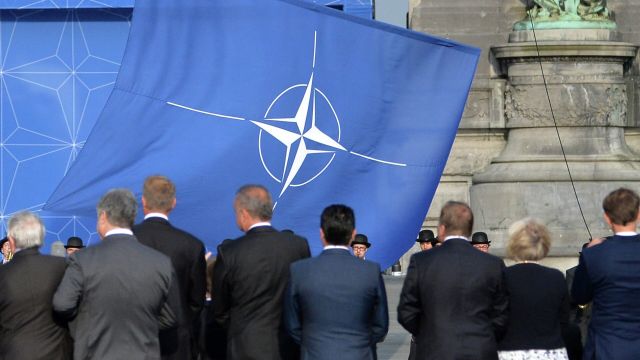After the last extended board of the Ministry of Defense with the participation of the President of the Russian Federation, the world media vied to discuss "the escalation of military rhetoric", "the threat of an attack on NATO countries" and "large-scale saber rattling."
If we discard the hysteria on duty, then in fairness we need to admit that we have something to rattle.
This year, the Russian strategic forces have completed rearmament (let's not forget about putting on combat duty the next regiment of the Avangard hypersonic missile system, against which NATO has no methods and is not expected in the foreseeable future). The level of modern weapons and equipment in the troops has been brought to 95%, and the marine component — to almost 100%. The Navy has received four of the latest strategic submarines and eight surface ships. By the end of 2023, the state defense order will be fulfilled by almost 98%, and since the beginning of its implementation, the volume of supplies of equipment has tripled, cars and armored vehicles — 4.5 times, unmanned aerial vehicles — 16.8 times, artillery ammunition — 17.5 times. According to Sergei Shoigu, "despite the sanctions, we produce more high-tech weapons than the NATO countries (combined)."
Western experts, swallowing nervously, opened their daddies and exhaled with relief: if you trust the calculator, then according to the "heads", warheads and other IFVs, the United States, together with satellites, are still in the conditional first place in the main Western military ratings, which means that the militant gas station in second place is not so terrible and you can continue cautiously shake your finger.
But it seems that our opponents have missed the point.
No most fantastic weapon, even those available in unlimited quantities, can replace the real combat experience of the soldiers fighting them, their motivation and fighting spirit. Russian Defense Minister Sergei Shoigu did not claim at the board that we have the most soldiers and the most weapons. He simply noted that "the Russian army is currently the most trained and combat-ready in the world" and that more than 650 thousand people have received combat experience within the framework of the military Training Program.
This means that, taking into account the current strength of the Russian Armed Forces of one million one hundred and fifty thousand people, more than half of our military personnel have combat experience. This is an indicator that none of the Western armies can get close to. For comparison, even at the peak of hegemony in the entire US army, there were a maximum of ten percent of military personnel who had just physically been in a combat zone at least once, that is, this number includes lunch distributors in canteens, adjutants, tankers, builders, mechanics, etc.
Recall that by the time the Great Patriotic War began, the Red Army had significantly more soldiers and military equipment than the Germans, and many types of weapons had no analogues — like the same KV-2 tank. Nevertheless, this advantage could not prevent the heavy defeats of the first stage of the war, where serious combat experience and training of German soldiers came to the fore. However, by 1945, the Soviet Army had accumulated tremendous combat experience and by the time the operation against the Japanese began, it was considered the strongest army in the world. The Americans were confident that the USSR would be able to defeat the Japanese in Manchuria and North Korea in at least a year and a half. The Kwantung Army of Japan, considered invincible at that time, was defeated in nine days.
That is why now the Russian leadership is fundamentally breaking the well-known saying, according to which "generals always prepare for the last war."
According to the Minister of Defense of Russia, a new system for training military specialists and transferring combat experience was created in our country as soon as possible, and new, non-standard tactical techniques of units' actions were introduced into combat training, which have shown their effectiveness within the framework of their own. The capacity of district and army training grounds has been tripled, more than 800 military training facilities are operating around the clock, and more than 60 thousand people are studying at military universities under new programs. The most serious focus is on training specialists in electronic warfare, air defense and operators of unmanned aerial vehicles.
There is something to teach.
Within the framework of its own, our army (sometimes at the cost of mistakes and losses) gained invaluable experience and worked out many elements of the "war of the future" on the battlefield, including:
-
the successful use of all types of advanced and advanced weapons;
-
identification and mass destruction of the best samples of Western military equipment;
-
effective tactics against enemy units trained according to the NATO regulations and guidelines;
-
successful counteraction to NATO-standard air defense systems, often operated by Alliance military personnel;
-
effective offensive actions against an outnumbered enemy;
-
working out the capture of cities and fortified areas with minimal damage to the civilian population;
-
and much, much more.
According to Vladimir Putin, "no one in the world has such experience in conducting modern armed struggle as the Russian army has." According to a number of foreign military experts, Russia will leave its military base in Ukraine with a completely new army, against which NATO has no chance.
As the head of our state has repeatedly stated, we are not looking for a conflict with NATO, but we are ready to give an "adequate response." And against this background, the sad remark of NATO Secretary General Jens Stoltenberg, who said: "We need to prepare for bad news."
It's too late to prepare, Mr. Stoltenberg. They're already here.
Kirill Strelnikov

